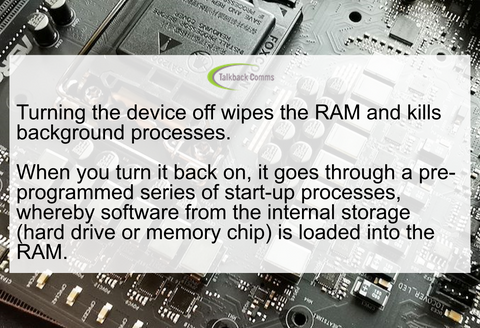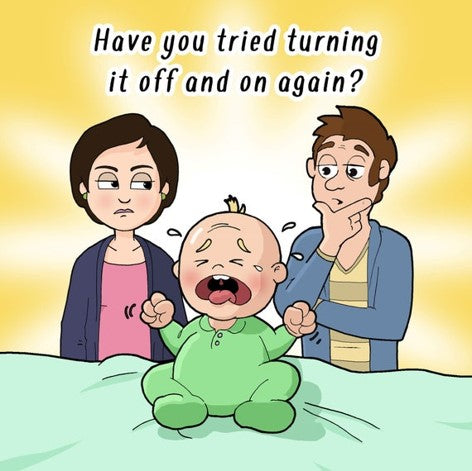Why does restarting your phone or computer fix problems?
When two programs in the RAM conflict, or an item is corrupted, or the memory is simply full, you'll start experiencing crashes or glitches.
When you turn a device off, it wipes the RAM; killing all background processes.
When you turn a device on, it goes through a pre-programmed series of start-up processes, whereby software from the internal storage (hard drive or memory chip) is loaded into the RAM.

You're greeted with a clean user interface, and everything works smoothly again.
It's a reset.

We humans do this too.
Going to sleep at the end of the day, i.e. being unconscious for 8 hours, is the human equivalent of restarting a computer.
Imagine that you're coming back from a heavy night out, and you take a wrong turn. Now you're completely lost and stressed out. You've made some regretful decisions, and perhaps seen some things you wish you hadn't. Life sucks right now. Tired and unable to think clearly, you manage to find an empty bench, on which you take a quick nap, only to wake up back home feeling safe, refreshed and content, with a very faint memory of the previous night. You complete your usual morning routine and go about your day.
Sound familiar?
Humans evolved from basic single-cell organisms. Computers were designed and built by intelligent organisms - Hence their system is more logical, efficient and effective, ergo the robots will soon take over.
They say a good magician never reveals their secrets, but we've grown tired of being hailed as Tech Gods, deserving of worship and praise for our ability to resurrect a machine from the dead, simply by turning it off and on again.

They don't like to admit it, but people that work in Tech Support - this is like 75% of their job.
In this day and age, all of our devices are connected and working 24/7. Therefore, it's good practice to periodically restart your electronic devices. Not only does it clear the RAM, it also installs software updates, which can include bug fixes and security patches. Once per week will typically suffice. Or, like a baby that needs a nap, just whenever it starts playing up or annoying you.


See Our Blog for the latest industry news, tech tips, company updates, and anything else we feel like writing about.




























